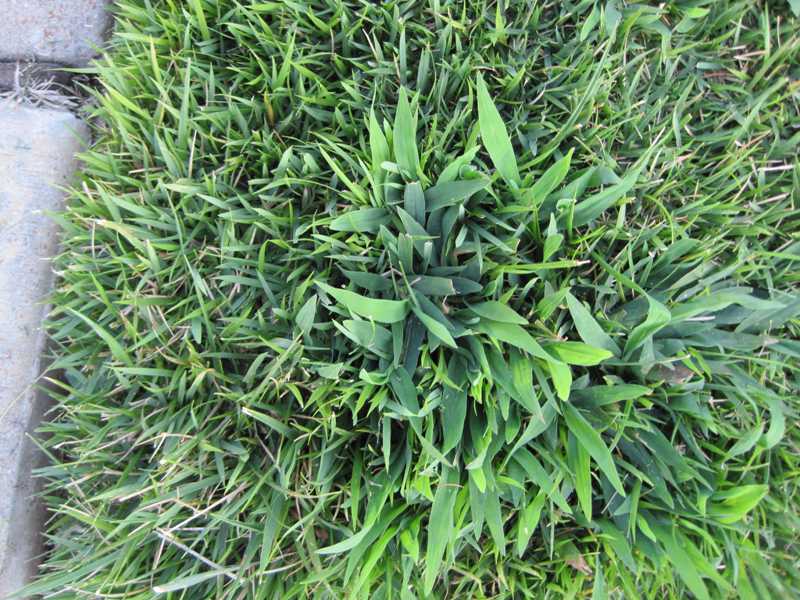 |
Large crabgrass (Digitaria sanguinalis) in zoysia grass lawn (Zoysia japonica) |
Crabgrass is an annual grassy lawn weed that spreads along the ground creating a dense mat that smothers desirable grasses. It was introduced from Eurasia and is widespread throughout the United States.
Symptoms and Diagnosis
There are three crabgrass species commonly found as weeds in lawns - hairy crabgrass (Digitaria sanguinalis), southern crabgrass (Digitaria ciliaris) and smooth crabgrass (Digitaria ischaemum). All three species are pale green, have a prostrate or ascending growth habit, and have flat 5-10 mm wide blades. The seed heads have 2-6 branches with 2 rows of seeds along each branch. Crabgrass may be found in a wide variety of landscape settings but grows best in full sun.
Life Cycle
Crabgrass is a warm season annual grass that overwinters as seeds and germinates when soil temperatures in mid spring consistently remain at 50 to 55 degrees for a number of days in a row. Seeds can continue to germinate throughout the summer if soil temperatures and moisture conditions are adequate. It grows during the heat of summer, sets seeds and is killed by the first frost.
Integrated Pest Management Strategies
1. Practice good cultural techniques to keep lawns healthy and free of drought, nutritional or injury-induced stress. Cool season grasses fertilized in the fall and mid to late spring will go into mid-summer dormancy later and will compete better with the crabgrass.
2. Set the lawnmower at 3 inches high. Taller grass will shade the soil and decrease the germination rate of crabgrass seeds.
3. Pull crabgrass plants before they set seed. One plant can produce 150,000 seeds.
4. Overseed existing cool season lawns in the fall. A thick turf in the spring will shade the lawn, retard seed germination and better compete with any germinating weed plants.
5. Apply corn gluten meal as a pre-emergent about two to three weeks before crabgrass seeds begin to germinate. In Missouri, this would be between mid March to mid April or about the time when forsythia first begins to bloom. Corn gluten will inhibit the germination of turf grass seeds and should not be used within six weeks of reseeding a lawn. Corn gluten is only about 65% effective compared to synthetic products but is an organic control.
6. Apply a pre-emergent crabgrass herbicide about two weeks before crabgrass seeds begin to germinate. In mid-Missouri, this would be between mid March to mid April or about the time when forsythia first begins to bloom. Applying a pre-emergent herbicide after the crabgrass has begun to germinate will not provide good control but may inhibit seedlings at the 2-leaf stage or seeds that are slower to germinate. Products that combine pre-emergent herbicides and fertilizer are not recommended. Read and follow label directions carefully.
7. Apply a post-emergent crabgrass herbicide if a pre-emergent herbicide was not used or if it was ineffective and control is warranted in early summer. Read and follow label directions carefully.
8. Do nothing in late summer. Crabgrass is an annual grass that will be killed by frost. Applying a post-emergent herbicide in late summer may not be warranted as the first frost will kill it. Next year apply a pre-emergent in early spring to prevent new seedlings.
Organic Strategies
Strategies 1 - 5 are strictly organic approaches.
More images:
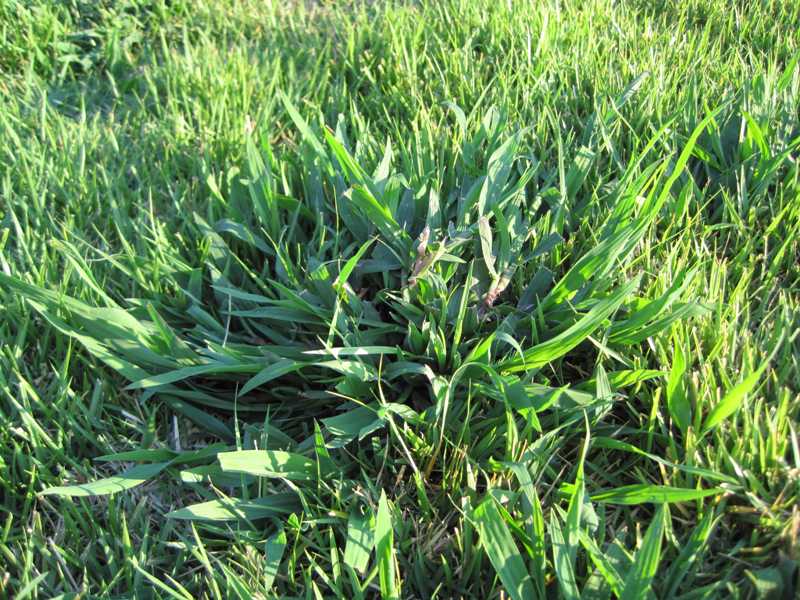 |
| Large crabgrass (Digitaria sanguinalis) in zoysia grass lawn (Zoysia japonica); note, rooting along nodes |
|
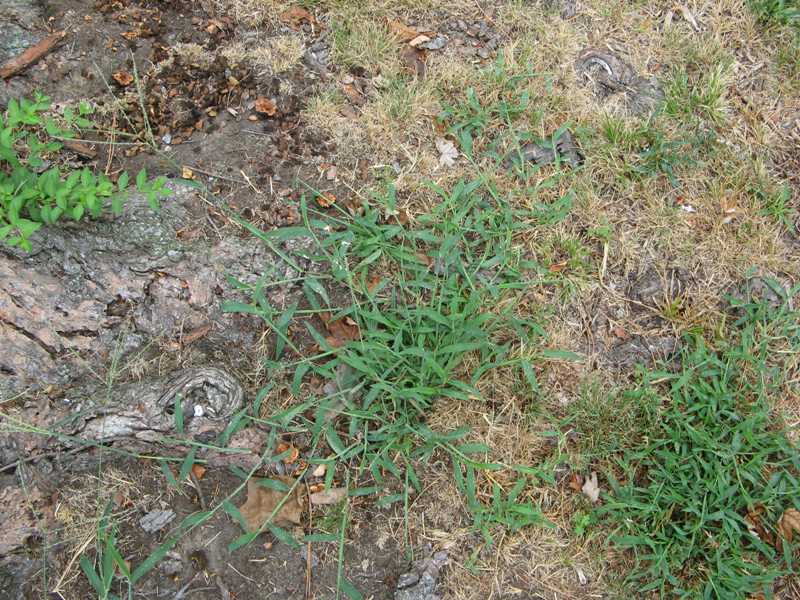 |
| Crabgrass (Digitaria) |
|
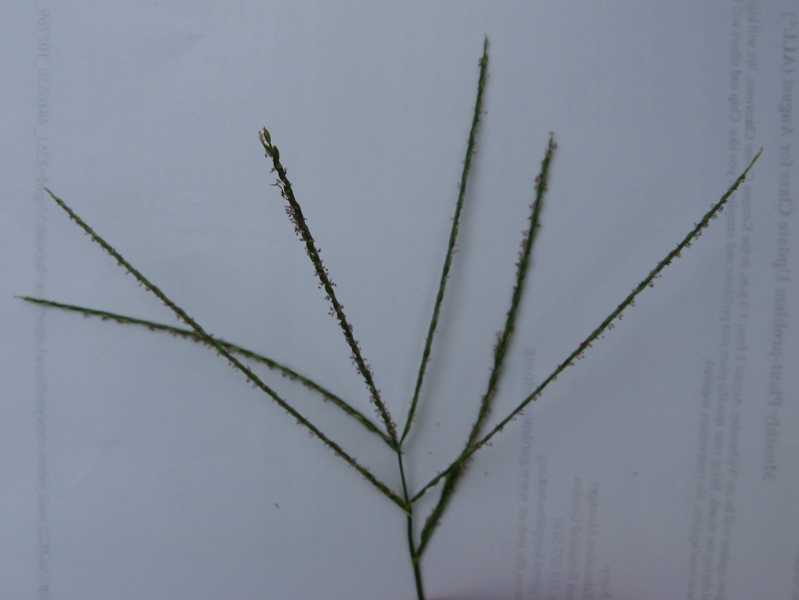 |
| Seed head of crabgrass (Digitaria) |
|
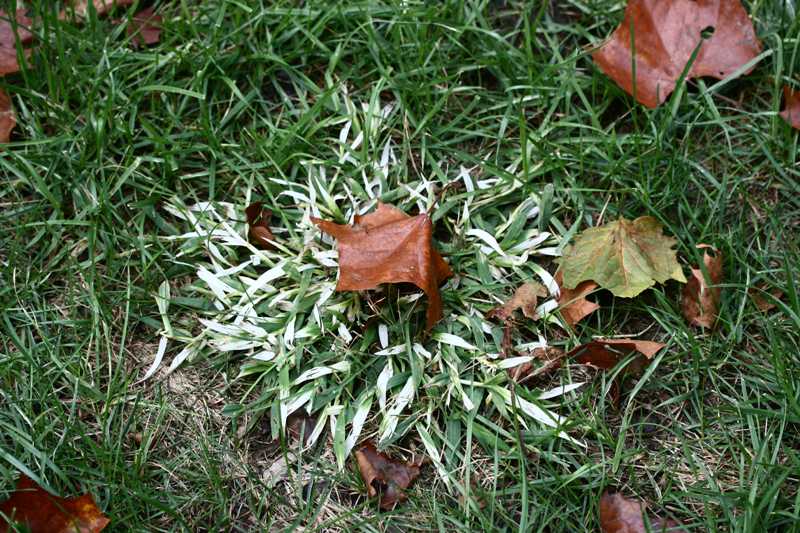 |
| White blades of crabgrass indicates control by the selective, systemic herbicide Tenacity. |
|
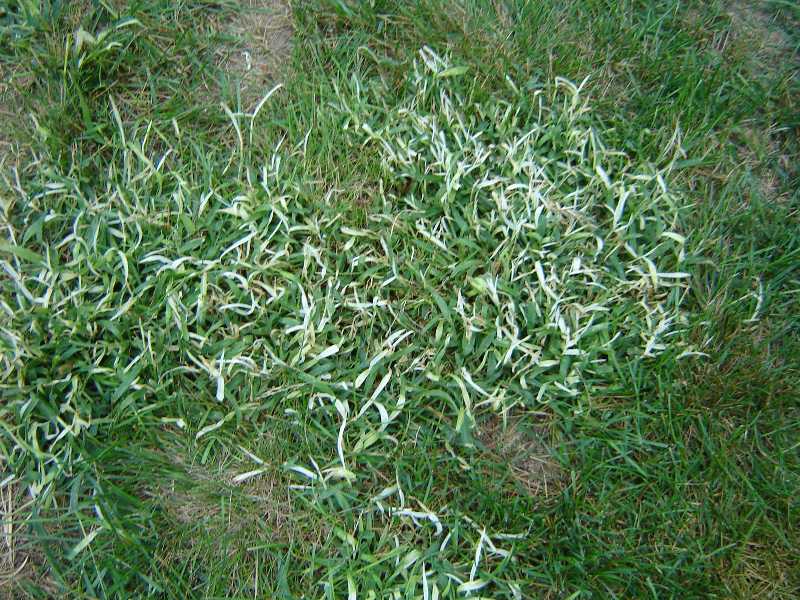 |
| Bleached blades of crabgrass produced by the application of the herbicide Tenacity. |
|
|